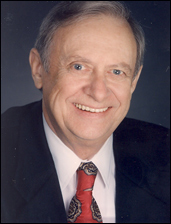Jack Strong
Year: April 19th, 2001
Location: LSU, New Orleans
Interviewed by: Blackburn, Henry
Abstract
Jack Strong is a pioneer in geographic pathology, with an epidemiological approach to autopsy populations, atherosclerosis, and risk factors across age, gender, and culture, published in 1968 in a classic, the International Atherosclerosis Project. Inspired by a famous New Orleans pathologist, Russell Holman, he and Henry McGill extended Holman’s ideas about atherosclerosis beginning in childhood with fatty streaks, found universally, to the findings of complicated lesions in later youth but only in certain cultures. Their work also demonstrated suggestively that the downturn in coronary mortality rates in recent decades was accompanied by diminished severity of coronary lesions. The detailed mechanisms of gene-environment interactions in atherogenesis were advanced by a sequel study of the pathogenesis of atherosclerosis in youth (PDAY). Strong would label his major contribution as methodological, in standardizing the collection and grading of atheroma, in the largest known collection of preserved arteries. (Henry Blackburn)
Quotes
The IAP in a nutshell
We found that while there were fatty streaks there [in Guatemala], the plaques were clearly different and quite different than what people thought about coronary heart disease and risk. And then, McGill and myself and some of the people from INCAP in Guatemala decided that we ought to do a broader study. After about a year and a half of testing people out and doing preliminary studies and evaluating all kind of grading maneuvers, we began the IAP. The definitive study and specimen collection was done from 1960 to 1964, and we had two central laboratories, one in Guatemala and one in New Orleans, and everybody had standard protocols, and people collected material under standardized conditions.
They sent materials into the central labs where they were all stained by the same techniques. And then we had grading sessions in Guatemala and New Orleans—alternate grading sessions where we had a team of four or five graders who graded all these specimens, and in each grading session we had repeat specimens slipped in again so the statisticians could check our evaluation reliability. We had statisticians who actually reviewed incoming specimens as to their quality. One even became a pretty good pathologist. We gave feedback to each investigator about quality. Usually one pathologist and one statistician would visit the different laboratories, and go over the quality and keep them stimulated. We had investigator meetings in New Orleans. At a half way mark we, you know, talked about preliminary results and kept people interested.
We had twenty-three thousand sets of human aortas and coronary arteries—we had both—and from age ten to sixty-nine, in nineteen different—what we call “location-race groups.” We had New Orleans whites, New Orleans Blacks, and we had Puerto Rican white, Puerto Rican Black. And then we had—in Durban, the Blacks and the Durban Indians. The Durban Indians were the third highest group in lesions.
I think seeing McMahon [statistician] influenced Henry McGill and me. And he just made us do it right, and he believed in—he probably had too much emphasis on methodology—he really believed in measuring things right—and I know you’ve been through all that with EKGs and everything else. So he influenced us. We did some traveling together and he helped me come up with the right measurement things in this cigarette smoking and athersosclerosis. Wissler thought seeing McMahon was a little too tough as he always would give the limitations of everything and Wissler didn’t like that. [laughter]
But Wissler was our spiritual leader. I mean, he was the guy that really made it happen. I’ve made speeches about his leadership and what he’d done, and how he—Henry and I told him it was impossible. He proved us wrong and he led us and we supported him and it was amazing. He’s not that much older than me, I guess, but I’ve almost a real father figure feeling about him. He’s been good to me. He’s got up and—I bet half the grants we got were probably because he was on the committee [laughter], and recognized what we were trying to do…and, was so unselfish.
HB: Yeah, they don’t make them like that anymore.
Full Transcript Access
Full transcripts of interviews may be made available to those engaged with original materials for scholarly studies by contacting us.
